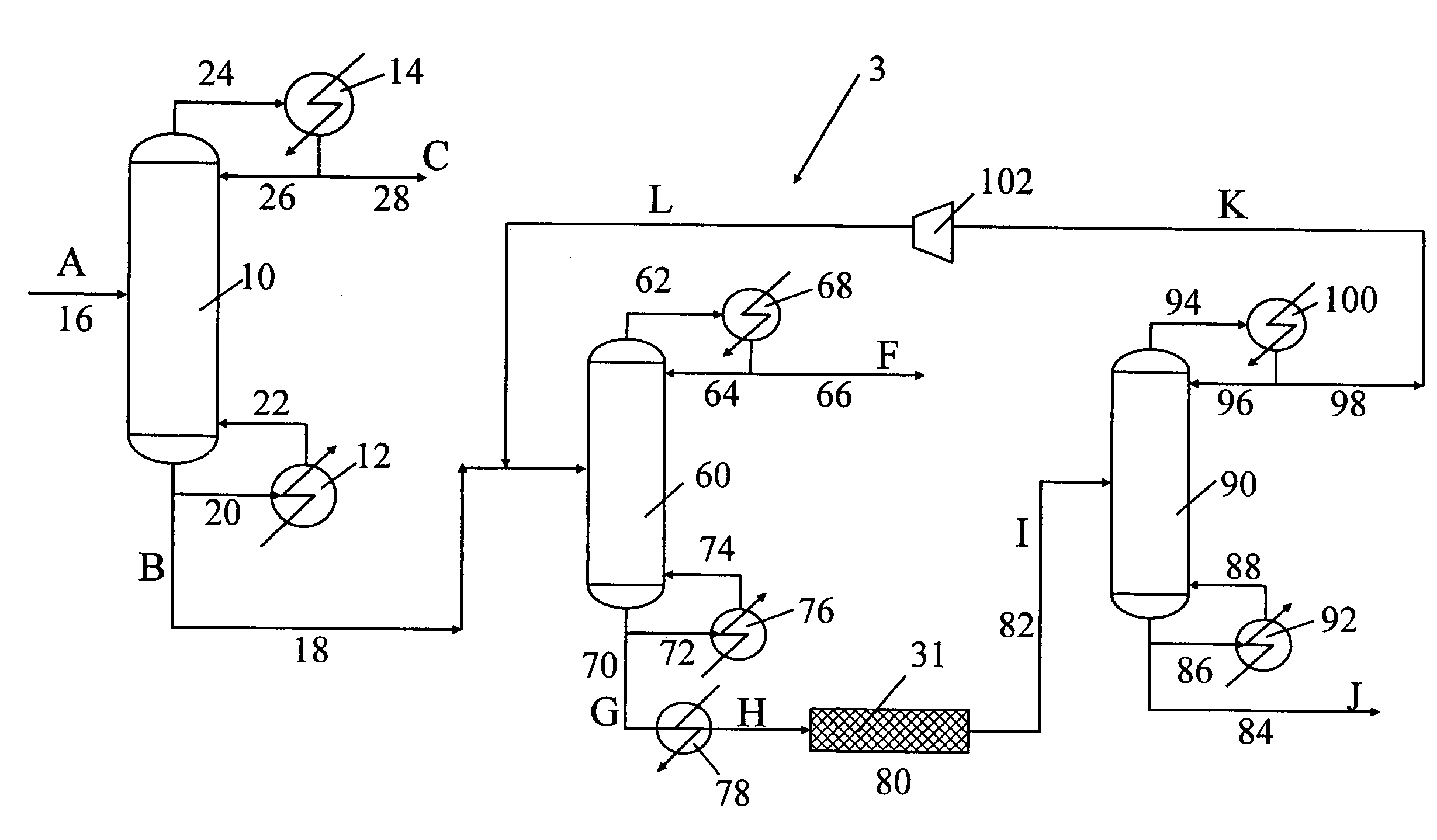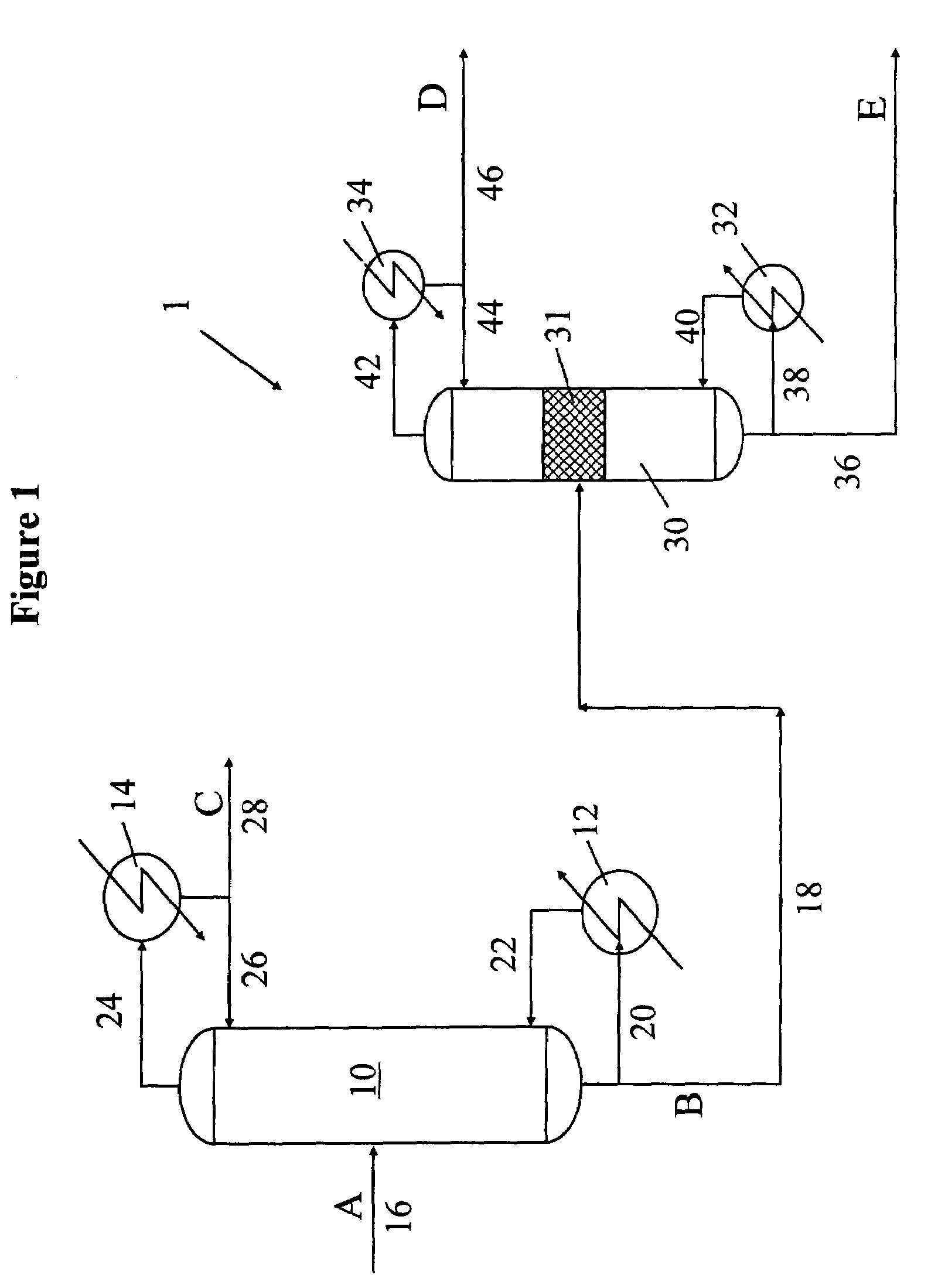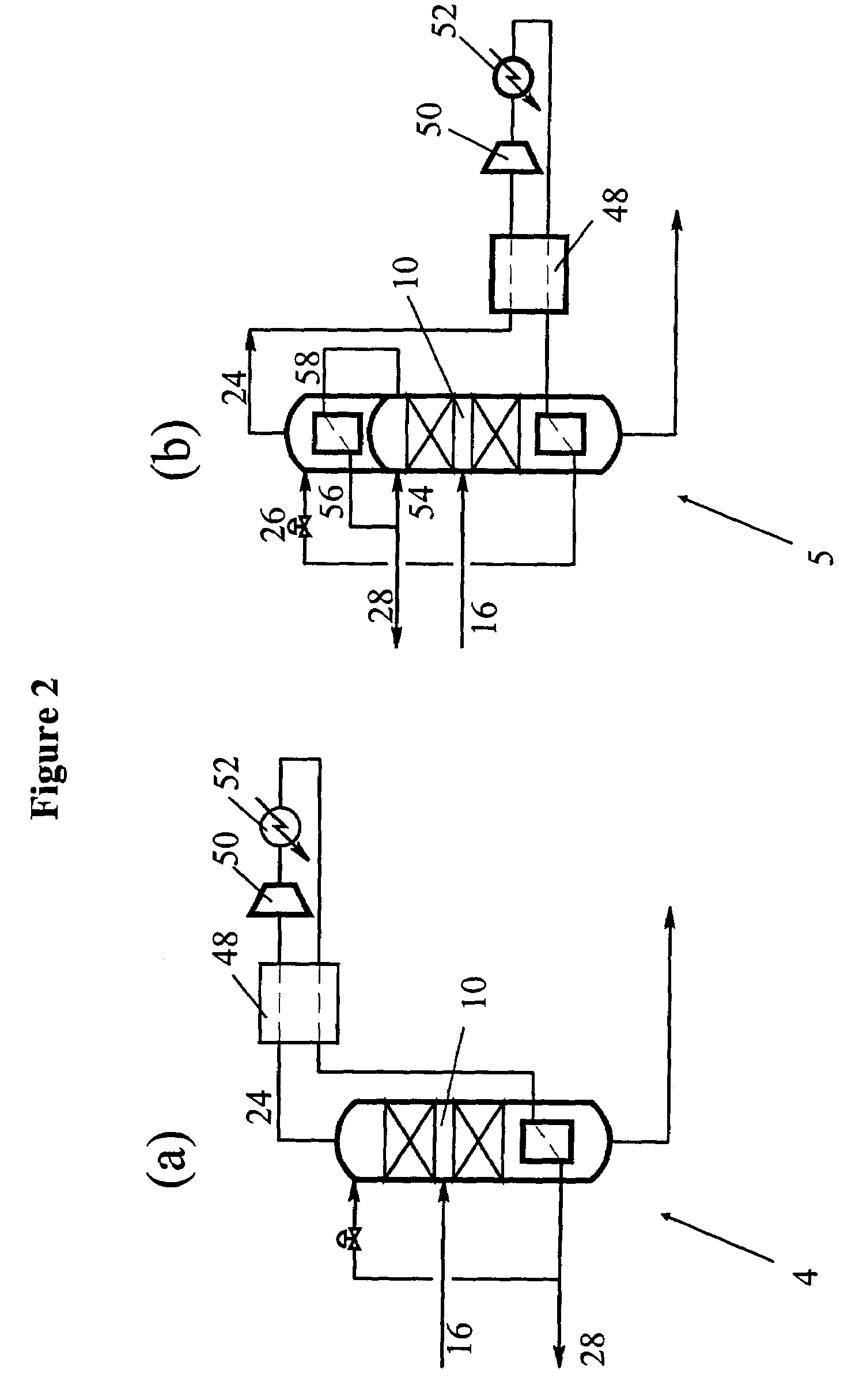Process for production of isotopes
a technology of isotopes and isotopes, which is applied in the direction of sustainable manufacturing/processing, separation processes, lighting and heating apparatus, etc., can solve the problems of substantial signal loss, physical and atomic properties differences, and substantially longer device life of circuits annealed in deuterium versus hydrogen
- Summary
- Abstract
- Description
- Claims
- Application Information
AI Technical Summary
Problems solved by technology
Method used
Image
Examples
example 1
Separation Deuterium from Hydrogen by Using Reactive Distillation Column
[0095]One example of the process of separation isotopes of the present invention is the process of separation deuterium from hydrogen as shown in FIG. 1. The feed hydrogen mixture (stream A) is passed to a first cryogenic distillation column to obtain an enriched mixture (stream B) comprising hydrogen, deuterium, and HD, wherein HD is present in the amount of at least 10 mol % in the bottom output 18 and an H2 stream in the overhead output. The recovery of HD in the bottom output is at least 97%. The overhead output is condensed in a condenser, and at least a part of it is recycled back to the first cryogenic distillation column to provide a deuterium depleted liquid reflux. At least a part of the condensed overhead output (stream C) consisting essentially of liquid hydrogen is collected.
[0096]The first cryogenic distillation column is operated at a pressure of approximately 20 psia (137.9 KPa). The bottom outpu...
example 2
Producing Deuterium from Hydrogen by Using Cryogenic Exchange Reactor
[0101]The process of producing deuterium from hydrogen is shown in FIG. 3 wherein the exchange reaction is conducted in a cryogenic reaction zone positioned in a cryogenic vessel separate from a cryogenic column. At least two cryogenic distillation columns are necessary for this example to obtain the enriched mixture comprising hydrogen, deuterium, and HD, wherein HD is present in the amount of at least about 10 mol % and preferably at least 79 mol %. The enriched mixture is then fed to the cryogenic vessel containing the cryogenic reaction zone.
[0102]First step of the process is similar to that described in Example 1, wherein the feed (stream A) comprising hydrogen is passed to the first cryogenic distillation column. The liquid bottom output (stream B) from the first cryogenic distillation column contains approximately 10 mol % HD and essentially all the D2 originally present in the feed. The bottom output is pas...
example 3
Separation 18O2 from 16O2 by Using Cryogenic Exchange Reactor
[0109]A feed mixture comprising oxygen and a natural abundance of oxygen isotopes was fed to the cryogenic distillation column to obtain the enriched mixture. Next, the enriched mixture was removed from the bottom portion of the first cryogenic distillation column. The overhead output containing about 99.99% was removed from the first overhead portion of the first cryogenic distillation column. The column was operated at a pressure greater than atmospheric. The enriched mixture, which is enriched in 16O18O, was fed to the second cryogenic distillation column 60 for further enrichment as shown in FIG. 3. The overhead output from the second distillation column contained 99.98% 16O2. The bottom output from the second distillation column, which is the second enriched mixture, contained 58.5% 16O2, 39.5% 16O18O and the remainder was 18O2. The second enriched was fed to the cryogenic reaction zone positioned in the cryogenic ves...
PUM
| Property | Measurement | Unit |
|---|---|---|
| mol % | aaaaa | aaaaa |
| activation energy | aaaaa | aaaaa |
| pressure | aaaaa | aaaaa |
Abstract
Description
Claims
Application Information
 Login to View More
Login to View More - R&D
- Intellectual Property
- Life Sciences
- Materials
- Tech Scout
- Unparalleled Data Quality
- Higher Quality Content
- 60% Fewer Hallucinations
Browse by: Latest US Patents, China's latest patents, Technical Efficacy Thesaurus, Application Domain, Technology Topic, Popular Technical Reports.
© 2025 PatSnap. All rights reserved.Legal|Privacy policy|Modern Slavery Act Transparency Statement|Sitemap|About US| Contact US: help@patsnap.com



